
Submitted questions will be posted with my response by the following Tuesday or before.
Submitted comments will be moderated and approved within 24 hours.
Natural Fiber Winter Clothes for Plus Size Woman
When I was much younger and didn’t know anything about toxics, I was quite interested in fashion. I loved going shopping and trying on pretty clothes in nice stores. In those days there were nice dressing rooms and saleswomen who would get to know you and what you like and they would call you when something went on sale that they thought was right for you.
Nowadays shopping for clothes is quite different.
Back in 1978, when I first started writing about natural alternatives to toxic products, practically all clothing was polyester. Just about the only natural fiber clothing was jeans and t-shirts and flannel shirts.
And then as natural fibers became more popular, I could go into stores like Macy’s and Nordstrom’s and there would be racks of pretty dresses and shirts and jackets and sweaters made from natural fibers. I even still have linen shirts that I bought at TJMaxx.
But I’m sad to report that it seems like the tide has turned again. Two weeks ago I went shopping here in California and virtually all women’s clothing is now made of synthetic materials. I couldn’t even find a pair of jeans (for women) that didn’t have spandex in them and there were no conduroy pants at all.
Having just spent 15 winters in Florida, I had no winter clothing at all.
I didn’t need anything fancy. I’ve been dressing “plain” for years, inspired by the Amish and their beautiful quilts made from blocks of solid-color fabrics—scraps from the making of their simple solid-color clothing. In Florida this translated into solid color cotton capri pants and solid-color cotton tank tops. I had two drawers: one with tops and one with pants. Every morning I would just open the drawer and take out one of each and I was done dressing. I also had some big linen shirts in solid colors.
What I was looking for, for my California version of dressing plain, was simple long-sleeve cotton t-shirts and solid-color corduroy pants. So I went to a website that I have occasionally purchased from in the past called Woman Within, and I found exactly what a wanted.
Here’s what I purchased:
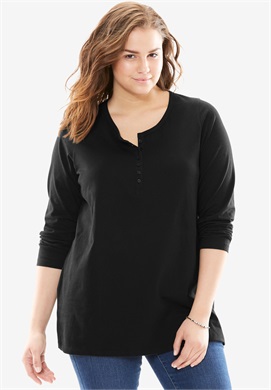 |
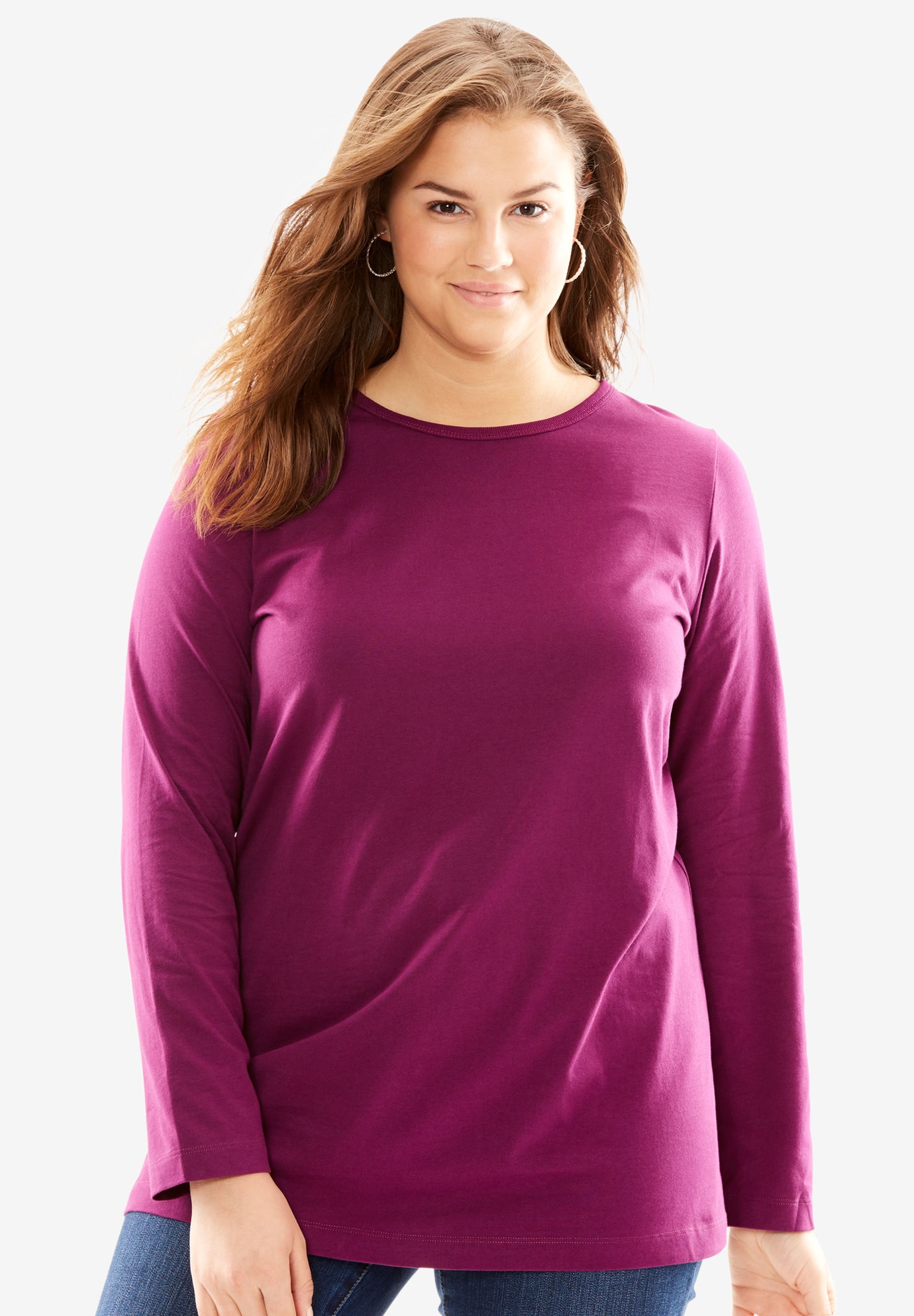 |
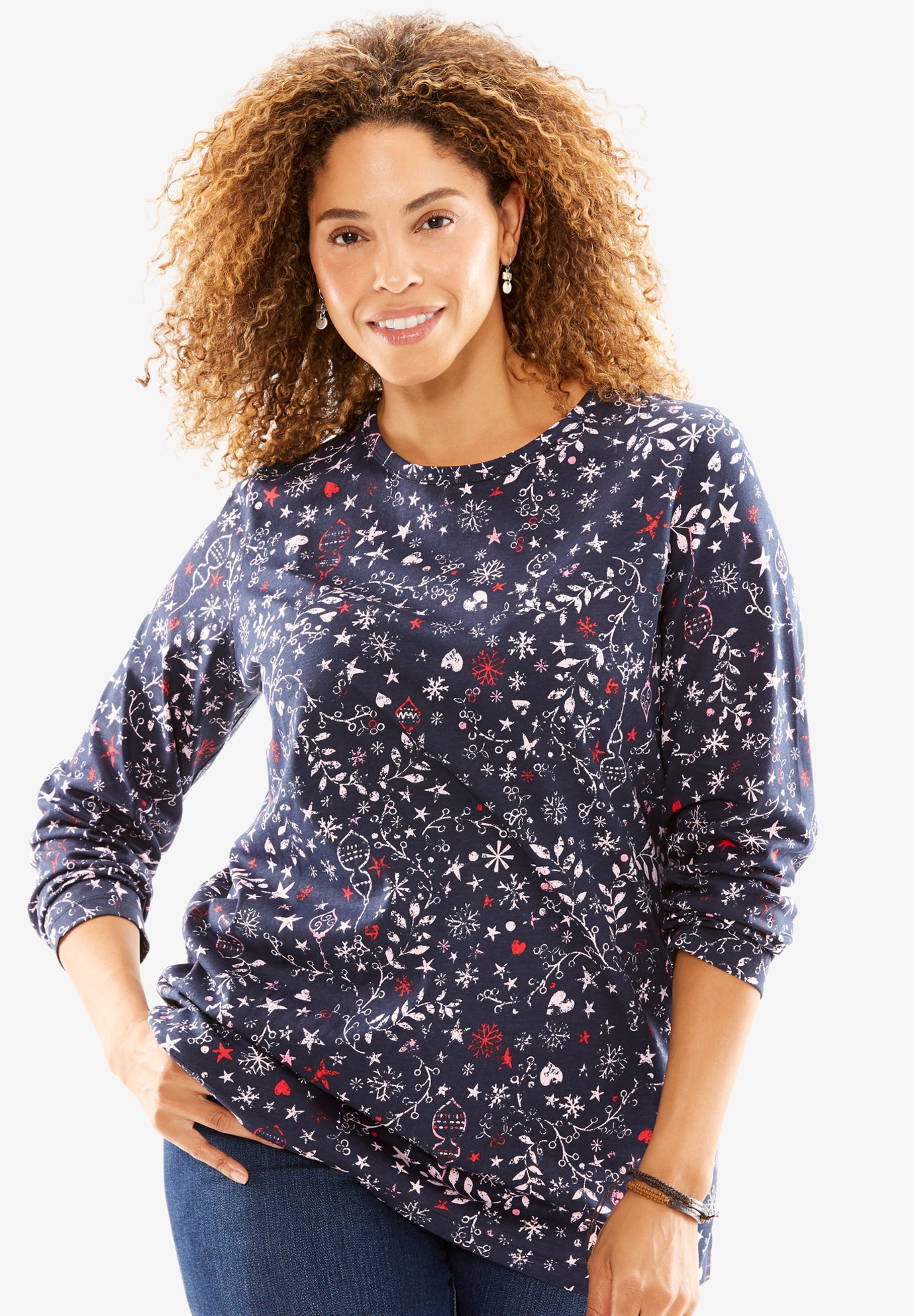 |
| T-shirt, Perfect, with long sleeves, Henley neck | Crew Neck Perfect T-Shirt | T-shirt, Perfect, with long sleeves, crewneck |
| soft, washable combed cotton knit, imported | washable soft pure cotton, imported | soft, washable combed cotton knit, imported |
| NOTE: The description says “long sleeve” but they were I little shortchanged for my arms. However, I love this shirt so much it doesn’t matter.. | NOTE: This neckline has a feminine cut with more space than a standard crew neck. | NOTE: This color is called “Navy Holiday”. Haven’t received these yet to comment. |
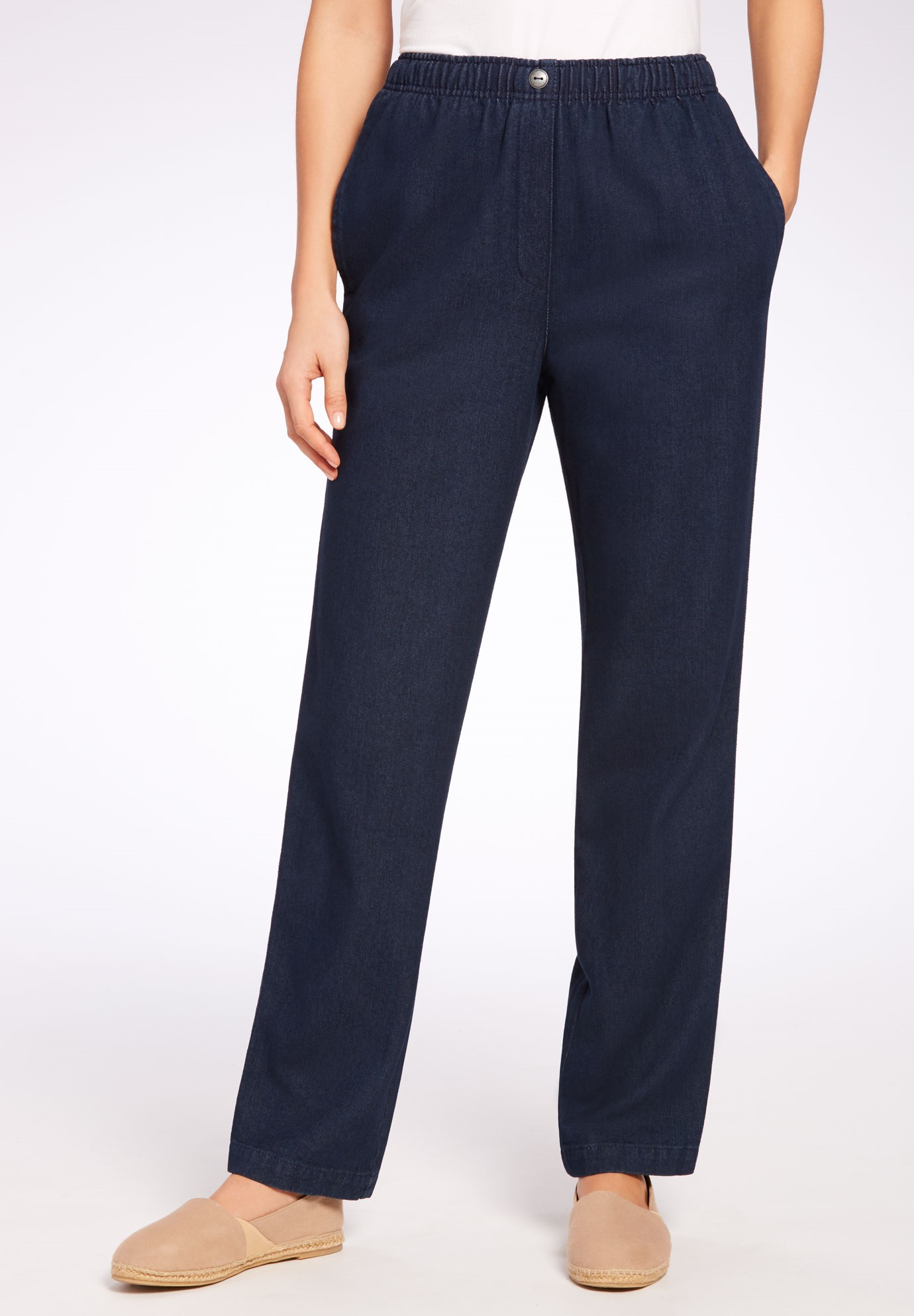 |
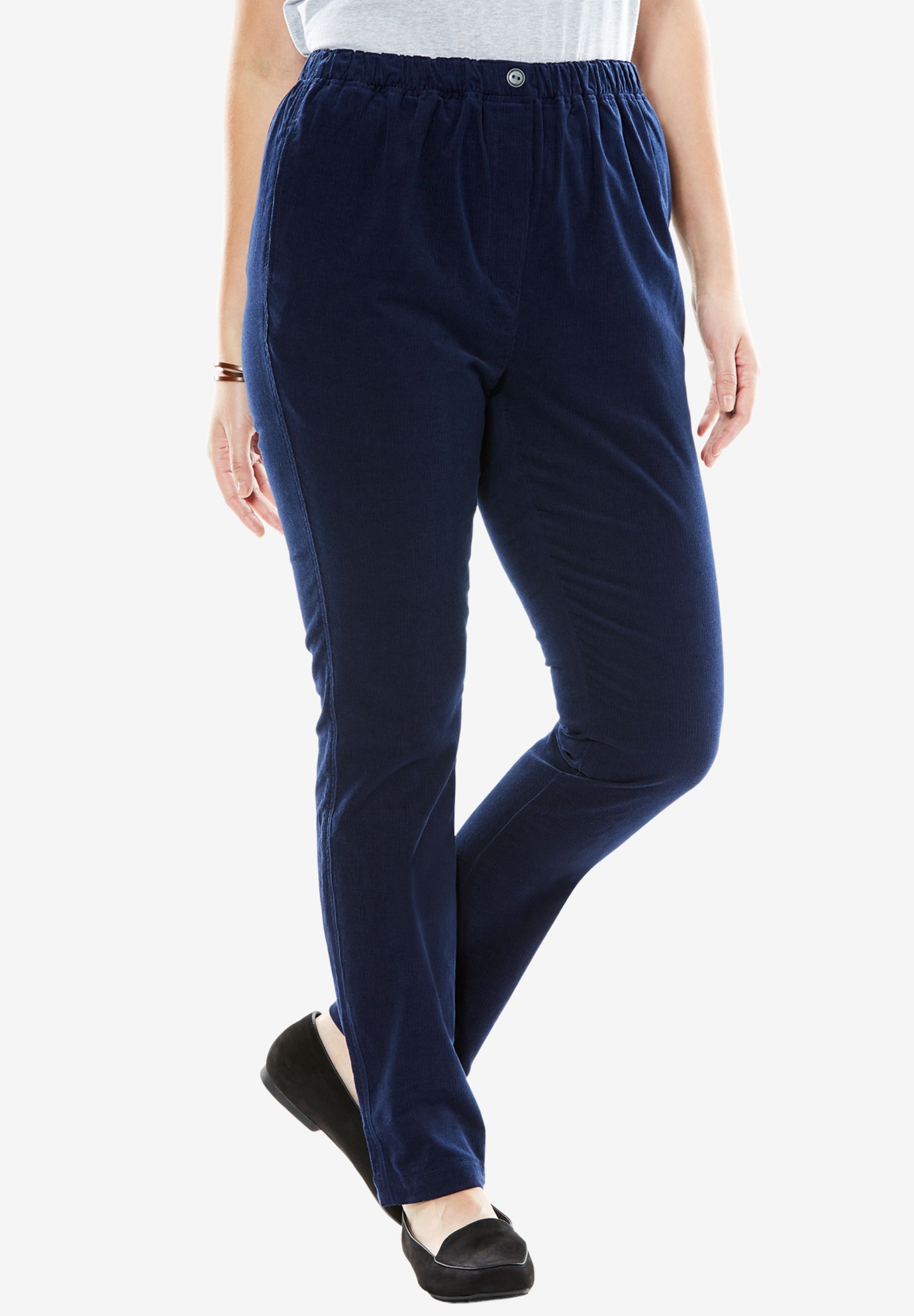 |
|
| Pants in corduroy with comfortable waist | 100% Cotton Comfort Pull On Jean | |
| soft woven washable cotton corduroy | washable woven cotton | |
| NOTE: These are actually cut big. Next time I’ll order one size smaller. | NOTE: Haven’t received these yet to comment. |
Bill Gates and Steve Jobs raised their kids tech free

Interviews with Bill Gates, Steve Jobs, and other tech elites consistently reveal that Silicon Valley parents are strict about technology use.
I think it’s important in today’s world for kids to become familiar with technology and know how to use it, but not have their entire world be on-screen.
I have an iMac and a MacBook and an ipad and an iphone and I know that seems like a lot, but I use them to do my work and keep in communication with my readers and other businesses. But they are not my whole life. I also have direct conversations with people face-to-face, spend time in nature, and have a reality of the real world that is not filtered through someone else’s online presentation. I used to have a friend who would say she wanted me to come visit so we could eat chocolate cake together, and you can’t eat chocolate cake via email.
I remember life before technology and I wonder if today’s generation even know what that’s like.
We are human beings whose lives are supported by our relationships with other humans and the natural environment. Technology is second in importance to the fundamentals of life in my world,
INDEPENDENT: Bill Gates and Steve Jobs raised their kids tech free and it should’ve been red flag
Costco Tackles Toxics With A New Policy
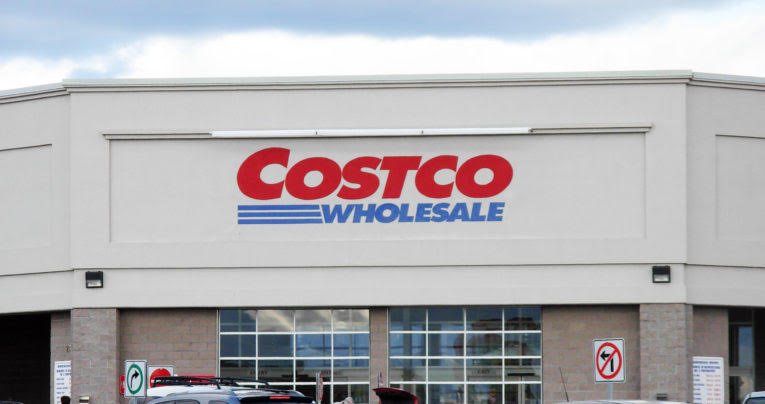
Costco has announced a new policy that will reduce harmful chemicals in the products they sell.
As a Costco member UI’ve been seeing a trend in this direction at their stores. I’m happy to see they will be continuing in this direction.
SAFER CHEMICALS, HEALTHY FAMILIES: Costco develops new safer chemicals policy
What is “Tooth Remineralization?”
Question from Susan
Hi Debra,
I’ve been seeing some tooth products say that they “remineralize” teeth. What does that mean and how would I know if such a product is working and my teeth are actually being remineralized?
Debra’s Answer
That’s a very good question. I was wondering what that was too, so I asked Sarah Haydock from Rowan Tree Botanicals to answer that question. She makes and sells products that remineralize teeth.
Here’s what Sarah told me:
Tooth remineralization is a fascinating process, to me at least! Many people are surprised to find out that, contrary to conventional knowledge, teeth are actually living tissue. They have the ability to remain healthy, heal, and regrow under the right circumstances. Let me explain a little bit about teeth, how they are alive, the processes by which they can become unhealthy, and how remineralization can heal them:
The outer two layers of our teeth are composed of a protein that holds large amounts of minerals. The outer-most layer – enamel – is 96 percent mineral. The layer underneath enamel – dentin – is 45 percent mineral.
Acids in the mouth bind to minerals in the teeth. This is a natural process, and so long as the minerals are replaced, no harm is done. However, if more minerals are bound than are replaced, tooth decay is the result.
Acid in the mouth can be the result of various factors. The two most common factors are excessive consumption of acidic foods and beverages and acid-forming bacteria in the mouth. Sodas are among the most acidic things humans consume, and their consumption is directly linked to tooth decay.
Some bacteria in the mouth form acids. Many of those bacteria form biofilms known as plaque on teeth. The biofilms serve as protective housing for the bacteria. Because the plaque is on the teeth, the acids produced by the bacteria directly erode the teeth.
One way to remineralize is simply to remove the factors that promote decay. This means removing acid-forming bacteria. Reducing soda consumption (as well as excessive consumption of vinegar, lemon juice, or other overly acidic foods,) is helpful. So is rinsing the mouth or neutralizing acids after consuming them. I’ll explain more about how to neutralize acids in just a moment.
Minerals can be replaced in two ways. One is through nutrition. The other is through the saliva. The dominant way that the body replaces minerals in teeth is through saliva. So again, acidic saliva reduces mineralization of teeth.
Rowan Tree Botanicals oral care products address remineralization in several ways.
First, some of the ingredients in the products are naturally alkaline. For example, the clay we use is very alkaline, and when it comes into contact with acids in the mouth, it neutralizes them. Thus, brushing after eating anything acidic neutralizes the acids that would otherwise promote tooth decay.
Next, some of the ingredients in the products naturally help to remove plaque biofilms. These ingredients break apart biofilms, which means bacteria in the mouth cannot hide in their protective houses.
Additionally, many of the ingredients in the products are naturally antibacterial, specifically effective against the bacteria that are known to promote tooth decay. The ingredients have different types of antibacterial actions, and when combined, they have a synergistic effect.
Also, some of the ingredients are proven to counter specific types of immune responses that some bacteria cause. For example, some bacteria cause the body to secrete enzymes that break down protein structures in the teeth. Some of the herbs in our formulas block those enzymes so that the structures of teeth remain strong.
Finally, many of the ingredients in our products have traditionally been used to promote healthy teeth and bones. Science doesn’t understand all of the reasons they work, but they have been used for centuries and have a longstanding tradition of promoting good teeth. They have been used successfully and safely for thousands of years.
Tooth remineralization is a natural, lifelong process. Ideally, it is happening all the time. Our products are designed to support your body’s healthy processes naturally.
So, how would you know that your teeth are being remineralized? The results are unlikely to be dramatic and overnight, although some of our customers say that they do notice a significant positive difference in the way their teeth feel after just a few brushings. With consistent use, you can expect to experience stronger, healthier teeth and gums. You should start to notice results within one to two months of regular use, particularly if combined with a healthy diet and lifestyle. (I recommend that you read Joey Lott’s “How to Heal Cavities and Reverse Gum Disease Naturally” for more information about diet and lifestyle factors needed for healthy teeth and gums.) Research has shown, for example, that consistent oil pulling (such as with Rowan Tree Botanicals oil pulling mouthwash) produces significant reduction of acid-forming bacteria in the mouth after one month. Consistency is the key.
Results you may notice include smoother teeth, less tooth sensitivity, halting or reversal of decay, teeth firmer in sockets, and reduced bleeding of gums.
For best results, we recommend using our remineralizing toothpaste as well as our oil pulling mouthwash.
Hope this answers your questions on tooth remineralization!
How Safe Are The Different Clothing Fibers?

Question from Holly
Hi Debra,
I saw the recent question about viscose and wondering if you could do an analysis of the most common clothing fabrics or fibres, and your recommendation whether they are good or bad? Just to name a few, how about bamboo, cotton, organic cotton, polyester/cotton, wool, silk, satin, nylon, linen, lycra, lyocell/tencel, modal. Probably way too many to comment on all of them.
Debra’s Answer
The SAFEST are any natural fiber. Those would be
- cotton
- linen
- silk
- wool
- hemp
It’s acceptable to wear these natural fibers if they are 100% natural fibers. Do NOT buy blends unless they are blends of two natural fibers. Even better would be if they are organic, but there’s just not enough organic fiber available yet, in enough clothing styles and sizes and prices to make organic clothing a reality for everyone.
So I look for cotton, linen, silk, wool and hemp.
There are way too many others to give you a complete list here.
Bamboo is viscose.
Many of these others have already been commented on in this blog. Use the search box to find them.
Comparison of EnviroKlenz and MoleKule Air Purifiers
Update April, 2020:
Read the latest information in the Portable Air Purifier Buying Guide. read more…
Toxics in the Environment Deadlier Than Violence….
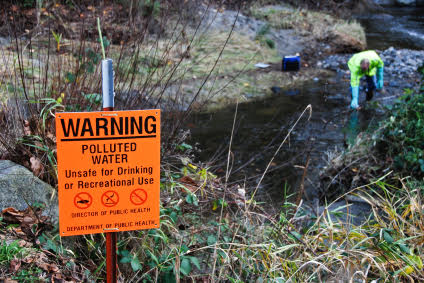
I haven’t subscribed to a newspaper for years, but now that I am living with Larry’s family, there’s a local newspaper on the table every morning. On Saturday morning I happened to glance down at the headline
DEADLIER THAN VIOLENCE
“They must be talking about toxics,” I thought. And I was right.
The story began:
Environmental pollution — from filthy air to contaminated water — is killing more people every year than all war and violence in the world. More than smoking, hunger or natural disasters. More than AIDS, tuberculosis and malaria combined.
And it went on to say:
One out of every six premature deaths in the world in 2015 — about 9 million — could be attributed to disease from toxic exposure…Experts say the 9 million premature deaths the study found was just a partial estimate, and the number of people killed by pollution is undoubtedly higher and will be quantified once more research is done and new methods of assessing harmful impacts are developed.
The financial cost from pollution-related death, sickness and welfare is equally massive, costing some $4.6 trillion in annual losses — or about 6.2 percent of the global economy.
This report is the first attempt to pull together data on disease and death caused by all forms of pollution combined.
ASSOCIATED PRESS: Study: Pollution kills 9 million a year, costs $4.6 trillion
Tiny Living in a Healthy Town
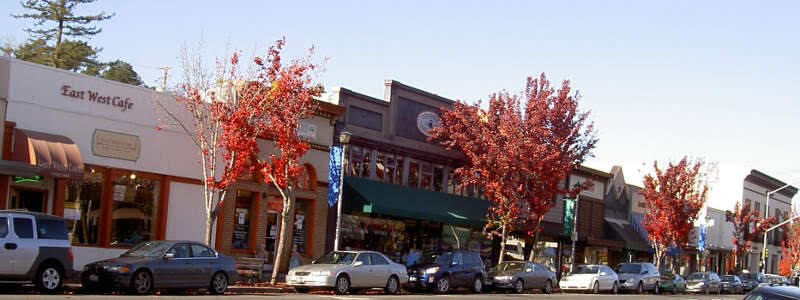
Sebastopol is the only town I’ve seen that has an independent bookstore, art supply store, and a music store right on main street, plus TWO organic food stores right near by.
Last week I wrote about how much I am loving living in Sebastopol California. This week I want to tell you more about how it’s healthy and the logistics of living here.
History of Sebastopol
Sebastopol was founded in the 1850s as a trading center for farmers and a site for a United States Post Office. After the Gold Rush of 1849m, more and more settlers came to California and many found a home in the fertile valleys north of San Francisco.
In 1875 botanist Luther Burbank came to Santa Rosa. Every school child in California knows Luther Burbank, who cultivated new varieties of fruits and vegetables through the traditional methods of seed-saving and grafting. No GMOs. With these simple methods he cultivated many new varieties in common use today, including the Russet potato, the most widely grown potato in the United States. Burbank’s experimental farm in Sebastopol is a wonderful place to visit, as is his home in Santa Rosa.
In the latest 1800s, a local farmer worked with Burbank to develop the Gravenstein apple for commercial use and Sebastopol became an apple boom town. Apples are so ingrained in the life of Sebastopol that even today, when many of the apple orchards have been replaced by vineyards, there is a free community apple press that can process 100 pounds of apples into cider in 20 minutes.
So from the very beginning, Sebastopol has been about food, farming, and health.
Coming Home to Sebastopol
I first came to Sebastopol about 30 years ago to visit the showroom of Shepherd’s Dream. While they are now located in Montague, California, Shepherd’s Dream started here in Sebastopol, and it was here that I worked with them to write the first standard for pure wool. The wool for the wool bed I sleep on came from local sheep near Sebastopol.
Around the same time, Larry’s parents purchased a lot in Sebastopol and built a house on it for their retirement. So I spent a lot of time in Sebastopol before I moved to Florida in 2002.
Today as I come home to Sebastopol after 15 years I see that much has changed and much is still the same. Many of the shops on historic Main Street are just the same, but there is now a vibrant farmer’s market, a wonderful new district called The Barlow that has transformed the site and buildings of an old applesauce factory into a vibrant artisan market district, and it’s just more crowded. Where before Sebastopol was a quiet town off the beaten path, it is now an integral part of the Napa-Sonoma wine industry.
I am here right now on grace. We didn’t choose to come to Sebastopol. We chose to come home and help our family. That our family is in Sebastopol is a gift. And I am thankful to be here every minute of every day. Life here agrees with me and I am loving exploring and experiencing this place.
The Cost of Living in This Healthy Town
Sebastopol is still a farm community, but it’s now much more expensive because of the value of the land for grapes and it’s proximity to San Francisco, which I think is now one of the most expensive places to live in America. Many of what used to be small family farms growing the foods of daily life, that same land is now growing gourmet wine. Still, there are many small farms growing specialty foods, but more and more land is going to grapes.
When I last lived in California in 2002. I had been paying a $2000/month mortgage for 12 years to live in a 700 square foot cabin. My whole life revolved around paying that mortgage and it was very difficult. This was part of the draw for me of moving to Florida. For the past 15 years I’ve been living in a 1600 square foot house with a $800/month mortgage. But even though I had a bigger house, I didn’t have quality of life.
Sebastopol clearly has the quality of life I want, but I wouldn’t be able to live here if I didn’t have family to stay with. I looked at the rentals just before writing this post and to rent a 700 square foot house is $3000. Hotel rooms on the weekend are $400/night. If you can find them. I mentioned to a farmer at the farmer’s market last week that I was looking for housing and she said, “Good luck. Any housing is hard o find.” And she was right. I think most people who live here now bought houses years ago.
Which brings me to tiny living.
Our Move Toward Tiny Living
Last week I wrote that Larry and I “have undertaken an enormous task of re-organizing our lives around ideas, abilities, relationships, experiences, adventures, and other such soul-satisfying interests rather than the pursuit of material goods.” With this goal in mind, we are simplifying our lives and reducing our possessions. And that’s why we are here. To reduce the pile of things Larry has collected over the years that are being stored at his parents.
But what has happened is pretty funny. My father used to say, “Be careful what you wish for because you just might get it.” Well, we are intending to live more small and simple. We’ve actually been watching all the tiny house shows on TV for months.
And what has happened is…we came here thinking we would have two rooms in Larry’s family house but for the moment we have only one. So we really have to live tiny! I don’t get a separate room for my office. We have one 12×16 room, That’s just under 200 square feet. The size of a smaller-size tiny house.
We can do this. When we first met we lived and worked in one room together.
Two things come to mind….
On tiny house tv shows people in tiny houses are always talking about quality of life. That they have exchanged their big houses and piles of belonging for more time and resources available for family, travel, education, and other pursuits of happiness. And we are experiencing that now. I was remembering this morning many years ago when I sold my grand piano because I was tired of moving it and buying or renting places big enough to hold it. If I were a concert pianist that would be one thing. But I hardly played it, so I sold it and fulfilled my lifetime dream of traveling through the British Isles. Today I am feeling the same about needing to carry so much stuff around with me if I want to go from place to place.
I’m also remembering something an architect friend said to me a number of years ago. We were talking about the ideal size for a home. And she said something about physical space versus living space. And how you don’t need to have all your living space in your home. Essentially we need a place to sleep, store clothing and other personal items, a place to bathe, a place to cook and eat, and for me, I need a place to do my work. But all of these do not need to be contained in a home. She considered her entire city as her “living space” and I’ve never forgotten that.
As we are gradually emptying our room to make space for our present needs, an interesting thing has happened. Larry started looking for a used trailer that we could transform into a tiny house space for my office. And as we started thinking about it, we saw we could build our own tiny house while we are living here and then have a tiny house when the time comes to leave. And that day will come. The house will be sold and we will need to live somewhere else. With a tiny house we could live anywhere.
And two weeks ago when the fires broke out and we had to escape the smoke, we could have just taken our tiny house anywhere if we already had one.
Living tiny in a way that’s mobile is looking more and more like our future. We’ll see what happens next.
Natamycin in Cheese

Question from Orsolya Csobi-Szabo
Hi Debra,
Do you consider Natamycin as a safe natural mold inhibitor used / added to most of the cheese products?
Thank you so much.
Debra’s Answer
Well, first thing is that it’s on the Whole Foods Market Unacceptable Ingredients for Food list.
You have asked me if I consider Natamycin to be safe and natural mold inhibitor.
It’s natural the sense that it material it is made from comes from nature (it’s not petrochemical).
Whether it’s safe or not is debatable.
But what I object to is that it’s an industrial additive that is only there so your cheese product does not mold. What I object to is industrial cheese products that are so old they need mold inhibitors.
Many cheeses get their flavor from mold added during the production process, such as blue cheese, which I love. But when cheese is cut and shredded and starts to mold, that’s an indicator that Nature is trying to break it down and return it to the ecosystem.
Your question brought to mind an experience I had yesterday at the farmer’s market when I ate some fresh goat cheese that the owner of the goats had just made right there at the farmer’s market. Such a gift. So delicious. That’s the cheese we should be eating. Not industrial cheese products.
Glass tea kettle and thermos
Question from TA
Hi Debra,
I’m wondering if you or your readers have any recommendations for glass (or other non-toxic) tea kettles and a thermos. I was using a stainless steel electric kettle from Hamilton Beach, but it stopped working. It boiled water very quickly, so I figured that a minute or so in the stainless steel probably wasn’t a significant leaching risk. Since it has stopped working, though, I’m pondering a glass one.
I’d like an electric one but haven’t succeeded in finding one that doesn’t have plastic pieces that come in contact with the water or steam. So I’ve looked for a stovetop one; I found one on Amazon that is glass, has good reviews that aren’t fake (I found several others that have fake reviews according to fakespot.com), and has a stainless lid. However, for borosilicate, there are always reviewers who say they use it on the stovetop and it’s okay, and then reviewers who say “Oh, I’d never use it on the stovetop.” Hmm…what to do?
I’d also like a glass thermos of some type to store the warm water in. Ideally, I could boil some water and store it to use throughout the day. I’d love to know of any that might be available. So far I haven’t found what I’m looking for. I have seen some double-walled glass mugs/tumblers, with varying reviews; but that wouldn’t keep the water warm all day. It would also be nice to have the thermos for transporting warm food on occasion. I saw an older style Thermos (brand name) that was plastic outside and glass lined inside — but the reviews were not good, and I believe the glass is lined with something anyway, so not just glass in contact with the food. Any suggestions? Maybe I need to think outside the box somehow.
Debra’s Answer
 |
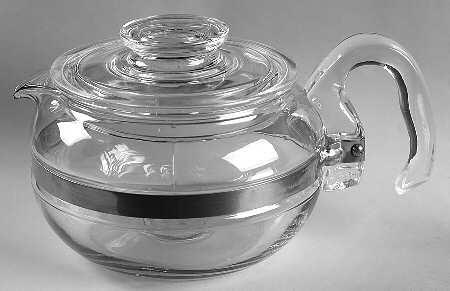 |
I use an Xtrema ceramic tea kettke to boil water.
I grew up with this exact Pyrex Flameware pot. It comes with a trivet to put on the burner below. I once left it too long and the water boiled away and it broke, but my mom bought another one. These are no longer made but used ones are available. No plastic at all. Search for “Pyrex Flameware 6 Cup Tea Kettle – Model 8126”
There are still thermoses with glass inside:








